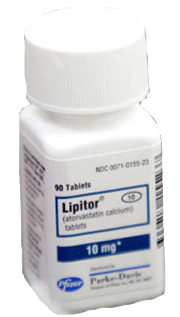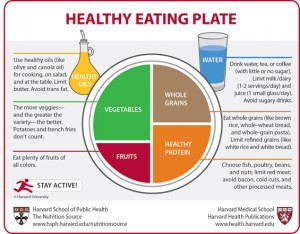 Fifteen years ago an access panel came swinging down on my head. My life changed forever. Not all the changes were bad, but there was a long period of difficulty. Looking back, I had a lot of symptoms that are no longer present. Other symptoms are much better or only intermittent. The best part, yes there is a best part, is that I learned a lot and became a better person because of what I went through.
Fifteen years ago an access panel came swinging down on my head. My life changed forever. Not all the changes were bad, but there was a long period of difficulty. Looking back, I had a lot of symptoms that are no longer present. Other symptoms are much better or only intermittent. The best part, yes there is a best part, is that I learned a lot and became a better person because of what I went through.
In the beginning I had lots of symptoms. Here are the ones I can remember. I had a constant migraine that, on a scale of 1-10 my pain level was between a 7 and a 10 all the time. It was always there and made it impossible to sleep without taking medication. I had difficulties with balance. I had to cruise the furniture like a toddler to make it across the room without falling. In public, people would comment that it was so nice that my teen children would let me put my arm around them in public. They were holding me up!
I burned myself a lot. Sometimes, when I was cruising the furniture and lost my balance I used the wood stove for stability while it was filled with a roaring fire. It took a while for the message of HOT to get from my hand to my brain and back again so I knew to remove my hand from the extremely hot wood stove. I also burned myself on the kitchen stove several times by picking up the burner with my bare hand to wipe up a spill. The same slow processing lead to some painful burns. I did get pretty good at treating burns, though.
I couldn’t stand up in the kitchen long enough to make food. My standing still limit was 1 – 3 minutes. Moving was easier than standing still. I couldn’t remember what I had already put in a recipe anyway, so cooking was not really an option. I couldn’t taste anything except large amounts of strong garlic. (When I was able to begin to cook this became an issue for my family as everything had way too much garlic in it.) I couldn’t smell either. The only smell I could smell was a phantom smell of dog poop. I used to ask the kids to go see if one of the dogs had gone in the house. They reluctantly looked even though they knew what I was smelling was not really there. I was a full time job to take care of.
My husband had to take off work for the first two years and care for me. I was often not a very nice person. I was demanding. I was emotional. I was like an adult child. I couldn’t do anything productive and I could do things that weren’t safe or smart. He became a single parent and a caregiver. I don’t know how he did it! The kids pitched in as much as they could. They looked for phantom dog poop, talked to me, helped keep an eye on me, cooked meals and watched movies with me. The first two years of my brain injury are pretty much a black hole in my memory. I don’t really remember anything. My memories come from my family telling me stories. When we talk about things from that time and I look confused, they tell me that it is from the time I don’t remember.
My other symptoms are not as impactful, but were things I had to work through. I had some issues with drool in the beginning and had to constantly wipe my face. Communication was difficult. I used “you know that thing” and “thingie” a lot. Another common phrase was, “that thing you use for.” I could also be very entertaining because I would think one word and another word would come out of my mouth. Everyone would laugh and I had no idea why. They would tell me what I had said and I would argue that I had said something entirely different. I didn’t have a sense of humor then. My other communication issues were stuttering and word finding. These made it difficult to get my thoughts out and lead to a lot of frustration. I didn’t seem to have any filters, so the frustration could get ugly.
My lack of executive function and the inability to filter thoughts and input made it difficult to be around me. I said things that should have remained unsaid. I couldn’t handle ambient noise, visual stimulation, movement or light. This made going anywhere difficult and often impossible. Movies were something I tried with earplugs a few times. It’s so loud in a theater that the earplugs didn’t do the job. I tried different kinds. With all the flashing of the light from the movie and the jump cuts and action scenes movies were out. I could even be stimulated by the light movement with my eyes closed. The more I could control my environment, the more comfortable I was despite the debilitating migraine that was always with me. I couldn’t remember movies anyway. I even had difficulty following the story.
I couldn’t remember what someone told me just a few minutes ago. My family was constantly having to repeat themselves. I know this was very annoying for them. I can remember my kids telling me that they had already told me. I would say I couldn’t remember and ask them to tell me again. It was a good thing that I had learned how to use a PDA before my brain injury. Learning a new skill was out of the question. If I remembered to put things in my PDA, and remembered to look at it, I could stay on track.
The first year of my brain injury I got very little treatment. I was a Worker’s Comp case. Their default position is that everyone is faking their injury. During this time I was allowed the standard 12 physical therapy visits even though reports stated I needed more. I could see my primary care doctor as often as I wanted and have as many prescription drugs as he wanted to prescribe for pain management. He tried to keep me as comfortable as possible and created a detailed record of my symptoms and all the things that didn’t help. One day a Worker’s Comp case manager showed up at our door unannounced. She was sent to find out why I had not returned to work yet. My husband let her in to see me sitting on the couch. She was apologetic that I had fallen through the cracks. She moved me to the head injury department and the services began.
The next week I had so many people showing up at my house for treatment it was overwhelming and exhausting. I could barely keep up. I had a case manager, a physical therapist, a speech therapist, an occupational therapist and a social worker. The therapists each came three times a week. They each gave me homework task to practice. The social worker and case manager each came once a week. I was referred to an additional doctor and a vision specialist. I was suddenly super-busy! It was so hard to keep up! My migraine got worse. My dizziness increased. I was exhausted.
There were lots of appointments and additional professionals added to my weekly schedule. It was all exhausting and much of it was helpful. By the end of the treatment process I was able to function better. I could walk unassisted, cook with a checklist and drive. My visual issues were a bit better. My eyes could track better using large print, but I still had difficulty remembering what I had read. My migraine, however, was unaffected.
I did end up finding the migraine answer when my neuropsychologist recommended Neurofeedback for brain training. Neurofeedback is the single most important thing I did to get my life back. Living with debilitating pain in your head 24/7 is exhausting. It makes it difficult to accomplish much. Neurofeedback started lessening my pain in the first 20 sessions. I continued to do Neurofeedback for a few years until I got control of my migraines. I still have only occasional migraines and they are not as painful as they were. The impact Neurofeedback had on my life is what led me to become a Neurofeedback therapist.
Today I am able to walk and talk like I did before my brain injury. I only have migraines occasionally and they don’t usually last long. I can taste everything and don’t need large amounts of garlic. I can smell things that are really there. I haven’t burned myself in years. I still have difficulty with reading and reading comprehension, but I can learn with accommodations and lots of effort. I still forget things, but I have tools I use to help me. I still have a hard time with facial recognition and names. I have learned that the more often I see someone in the same context, the easier it is for me to recognize them and remember their name in that context. It takes longer for me to recognize someone in a different environment. For the most part, people who don’t know me well are not aware of my deficits. I can carry on an intelligent conversation despite my decrease in intelligence. I’m the only one who feels the difference. The only thing people who are not close to me notice is that I don’t remember what I said. I can’t repeat what I said a few minutes ago exactly. I can, however, say it differently and stay on subject. The older I get the more this is socially acceptable, so that’s a plus. Welcome, gray hair!
I have been able to return to school and complete my bachelors degree in psychology with almost all As. I was able to complete my masters in counseling psychology with As and one B. I was able to do this higher learning with accommodations that allowed me to use large print, digital texts and extra time for exams and assignments. It takes me longer than average to read and comprehend and to process information. Higher education is not something I would have thought possible within the first 5 years of my brain injury. The cool thing is that it wasn’t that difficult. It took time and effort, but it wasn’t a total struggle. I kept with it and I did it.
To me this is evidence of huge improvement. I have made it through a lot despite being told I would be disabled for the rest of my life. (They did not know about brain plasticity.) I have pushed through lots of pain. I have figured out how to cope and how to do things differently. My thinking has changed. I continue to move forward in my life learning how to be my best self.




